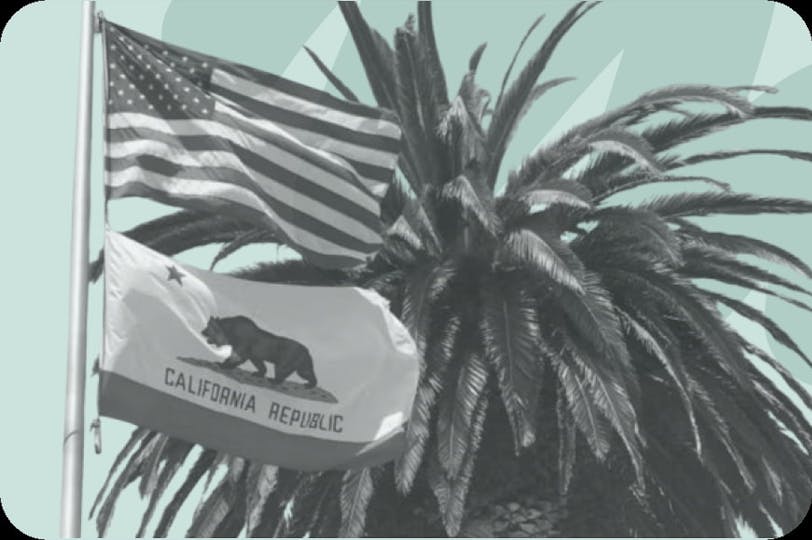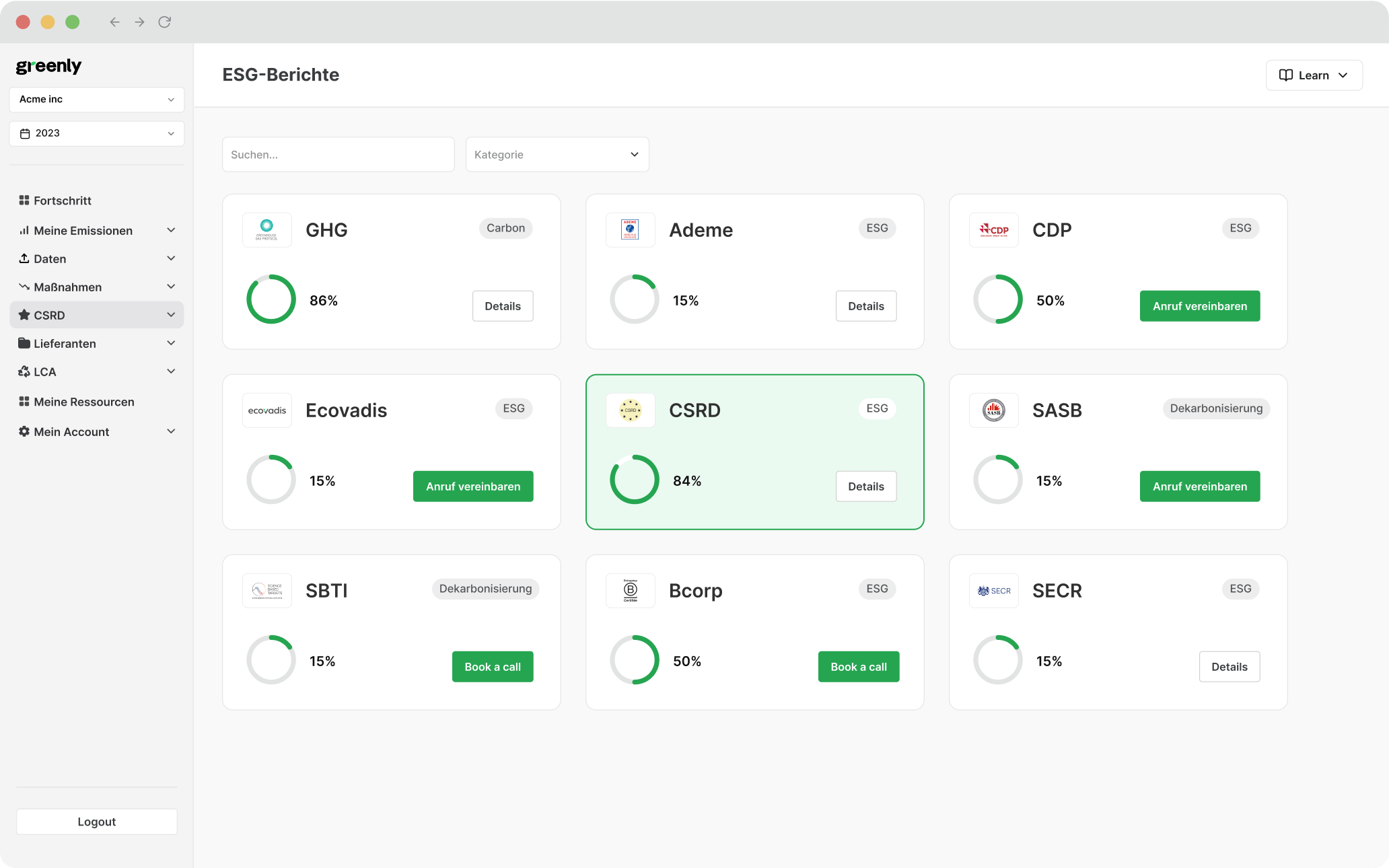
California Climate Accountability Package: SB253, SB261, & SB252
What is the California Climate Accountability Package, and how do SB 253 and SB 261 (SB 219), and SB 252 help the state work towards their environmental goals?
ESG / CSR
Industries



Rather than treating sustainability as a separate function, sustainable leaders make it part of the core business strategy. It informs how companies innovate, manage risk, support their employees, and engage with the wider world. It’s a mindset that recognizes business doesn’t operate in a vacuum, and that leadership means being accountable for more than just profit.
In this article, we’ll explore how this approach is playing out across different areas of business and the role of the C-suite in putting it into practice.
The companies making the boldest environmental strides tend to have one thing in common: leadership that’s personally invested. Whether it’s powering entire operations with renewables or rethinking product lifecycles, environmental action tends to accelerate when senior leaders get directly involved.
Senior executives have enormous influence over how environmental goals - especially those addressing climate change - are prioritised and how fast progress happens. Strong leadership skills are essential to champion sustainability in the C-suite, signaling that environmental performance isn’t just a side project. It becomes embedded in how the organization allocates resources, evaluates risk, and defines success.
At this level, leadership means:
When these conditions are in place, real operational change becomes possible.
Take energy use. Switching to renewable energy is rarely a purely operational decision, it often involves capital investment, renegotiated contracts, and long-term strategic planning. When executives make that call, it ripples throughout the company.
These aren’t symbolic moves. They reshape how the company consumes energy, what technologies it invests in, and how it’s perceived by investors, regulators, and consumers. Leadership at this level turns sustainability into an engine of innovation and long-term value creation.
True sustainability leaders challenge the status quo, which pushes companies to reconsider not only what they make, but how they make it. This often means questioning long-established methods, materials, and supply chains to find fundamentally better ways to deliver value with less impact on the natural environment.
In many industries, this requires a shift from incremental improvements toward systemic innovation. Leaders must be ready to rethink everything from product design to sourcing strategies, manufacturing processes, and logistics, transforming sustainability from a compliance issue into a core driver of sustainable business and economic growth, as well as differentiation.
Tesla, for example, didn’t just build electric cars – it forced legacy manufacturers to accelerate their EV programs and rework entrenched production processes. This shift is now pushing innovation not just in product design, but in sourcing, logistics, and energy use across the sector.
What sets sustainability leadership apart?
By embracing these practices, companies don’t just reduce their environmental footprint; they position themselves as pioneers in a rapidly evolving market.
Companies in consumer goods face a different challenge: packaging, materials, and waste. Tackling these environmental issues means rethinking how products are designed, delivered, and disposed of.
Unilever and Procter & Gamble have taken this on with ambitious waste reduction programs. Sustainable practices include:
These initiatives don’t happen by chance. They are driven by clear priorities and dedicated resources at the highest level of leadership.
For certain companies, sustainability isn’t just one part of the business; it defines the entire model.
Consider the outdoor brand, Patagonia. Environmental responsibility is woven into every decision, reflecting a clear sustainability vision that guides the company’s actions, from how materials are sourced to how stores are designed and even to the company’s outspoken activism. Here, leaders don’t simply sign off on sustainability policies; they drive them personally, blending purpose with profit in a way that feels authentic and deeply committed.
True sustainable leadership means putting corporate social responsibility (CSR) front and centre. At the highest levels, C-suite executives shape how companies address social equity, employee welfare, and community impact, proving that long-term business success and societal good can go hand in hand.
Creating a diverse and inclusive culture starts with leadership development. Satya Nadella, CEO of Microsoft, is a prime example of a leader who has made inclusion a core value, setting an example for aspiring leaders looking to make a positive impact. This leadership style involves:
Policies like this don’t just improve morale, they also help companies attract and retain a wider pool of talent, which fuels innovation and productivity.
Increasingly, CEOs are stepping up as advocates for societal change. Whether it’s through corporate philanthropy, donating to social causes, or publicly supporting human rights, climate change, and environmental justice, top executives are using their influence to push for broader impact and drive a sustainable business.
Governance may not grab headlines like bold climate targets or flashy social campaigns, but it’s where real credibility is built. Ethical leadership at the top sets the tone for how a company behaves, communicates, and earns trust over time.
When executives adopt ethical business practices, especially in financial reporting and investor communications, it builds a foundation of trust that numbers alone can’t achieve. Transparent reporting, honest disclosures, and integrity in decision-making reassure investors that the business is stable and accountable.
Governance used to be a niche concern in investor relations - now, it’s central. Ethical risks, board accountability, and long-term resilience are under scrutiny in every pitch deck and annual report. A company’s stance on integrity can influence everything from capital access to shareholder loyalty to how well it weathers economic challenges. It’s no longer just about financial performance, but how those returns are achieved.
Strong governance and ethical leadership are increasingly recognised as a vital component of effective business management.
When executives demonstrate responsible business practices:
Sustainable leadership means recognizing that no company operates in isolation, and that meaningful progress requires a holistic approach involving active engagement with a wide network of stakeholders.
This approach involves:
Take The Body Shop as an example: the company has long embedded stakeholder engagement into its operating model, from pioneering community trade partnerships with small-scale producers to supporting local employment in the regions where it operates. Its ethical sourcing program prioritises fair wages and long-term supplier relationships, while its activism on social issues, from gender equality to human rights, reflects a business strategy grounded in broader societal impact.
With increasing ESG scrutiny and rising stakeholder expectations, sustainable leadership requires rigorous measurement, open disclosure, and a commitment to accountability. Leaders who harness data and transparency create a culture where sustainability performance is both tracked and continuously improved.
Key elements of this approach include:
Defining clear, meaningful indicators aligned with global standards such as GRI, SASB, and TCFD ensures that sustainability efforts are comparable and credible. These metrics span environmental impacts like emissions and water use, social factors including workforce diversity and community engagement, and governance practices.
Leveraging technology to collect real-time data helps companies monitor their progress, optimise the use of natural resources, identify areas for improvement, and respond swiftly to emerging risks. Advanced analytics can also uncover opportunities for efficiency and innovation.
Leading companies openly share their sustainability performance, even when results fall short of targets. This honesty builds credibility with investors, customers, regulators, and employees, reinforcing trust and long-term relationships.
Effective governance mechanisms assign responsibility for sustainability outcomes to specific teams and individuals. This often involves linking executive incentives and board oversight to ESG goals, ensuring sustained focus and drive.
Data insights are used not just for compliance but to inform strategic decisions and operational changes that deepen impact over time, requiring key skills like analytical thinking, adaptability, and strategic foresight to respond to evolving stakeholder demands.
Danone exemplifies this skills-based, data-driven leadership in action. Its “One Planet. One Health” strategy connects the health of people and the planet to the company’s business objectives and aligns closely with the Sustainable Development Goals. From regenerative agriculture and packaging innovation to improved nutrition and water stewardship, ESG priorities are embedded into every part of the business model. Crucially, ESG performance is also tied to executive compensation and investor reporting, reinforcing accountability at the top.
At Greenly, we provide a comprehensive sustainability platform that empowers businesses to measure, manage, and reduce their carbon footprint while driving broader environmental improvements.
Our platform includes:
| What Greenly Offers | How It Helps |
|---|---|
|
Automated carbon accounting
|
Track emissions across Scope 1, 2, and 3 automatically with minimal manual input. Our platform simplifies data collection and categorization, helping you stay on top of your carbon footprint across the full value chain. |
|
Detailed reporting tools
|
Easily generate reports that support compliance with global ESG frameworks and enhance internal and external transparency. Our tools help align with standards like the CSRD, GHG Protocol, and TCFD. |
|
Tailored decarbonization strategies
|
Get actionable, data-driven plans that target your biggest emissions sources. Our experts work with you to develop realistic roadmaps that reduce impact while supporting growth. |
|
Insights and recommendations
|
Access practical guidance to improve energy and resource efficiency, reduce waste, and integrate sustainability into business operations. Built-in insights help you move from reporting to real progress. |
Whether you’re just starting your sustainability journey or aiming to sharpen your existing strategy, Greenly equips you with the data and tools to turn ambition into action and deliver meaningful results. Get in touch today to learn more.
